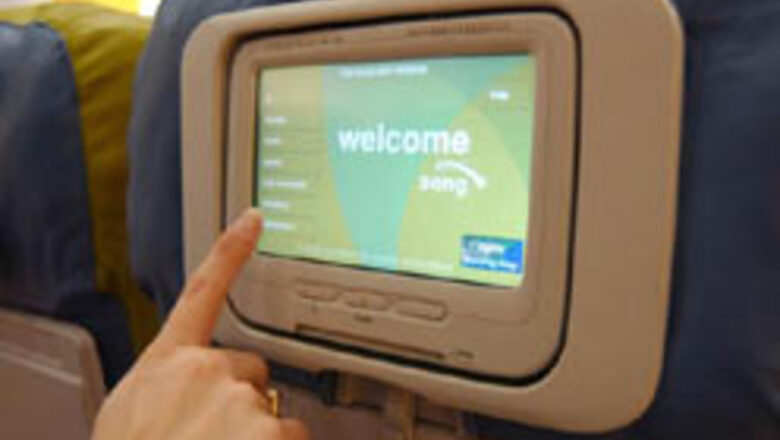
views
New York: The prospects of surfing the Internet and receiving e-mail at 35,000 feet took a knock on Thursday as Boeing Co. said it will wind down its service for offering Internet access on board planes.
Although the market may get a boost with newcomers LiveTV LLC and AirCell Inc. developing offerings, cost pressures on airlines make it unlikely that on-board Internet access will be widely available soon.
"We've been looking for ways to connect the cabin, but it has to make sense financially," said Billy Sanez, a spokesman for American Airlines.
"It's going to be a bit until we see something feasible."
Upgrading an airplane for Internet service is a complex task, and with fuel prices high, airlines are more focused on keeping costs down rather than offering new, expensive perks.
"It's kind of like rewiring your office," said airline consultant Robert Mann. "It creates a lot of downtime and it's very expensive."
The least disruptive option is to have the technology for providing Internet access built into new planes, but very few of the large US carriers are in a position to be buying new airplanes," he said.
After six years, Boeing said on Thursday it would shut down its loss-making Connexion unit, which allowed airlines to provide high-speed Internet service to passengers.
The satellite-based service, for which Boeing failed to find a buyer, was too costly, and few airlines signed on.
The company said it would take charges of up to $320 mn to wind down the service, which analysts estimate attracted just over 1,000 users a day and cost as much as $150 million a year to run.
Boeing becomes the second large company to withdraw from the in-flight communications market in recent months.
In June, Verizon Communications Inc. said it was canceling its on-board phone service by the end of the year.
Hoping to revive the market, AirCell and LiveTV, a unit of low-cost carrier JetBlue Airways Corp., are planning new in-flight Internet offerings after winning licenses to operate air-to-ground communications services in June.
AirCell, which paid $31.3 mn for one of the network licenses, plans to launch its service by the end of 2007, Chief Executive Jack Blumenstein said on Thursday.
AirCell's service, which would turn planes into flying hotspots, is based on cellular technology, giving it an edge over satellite-based Connexion because the equipment is cheaper and lighter, Blumenstein said.
PAGE_BREAK
For example, AirCell's cellular antenna is about the size of a deck of cards and weighs less than half a pound (0.2 kg), while Connexion equipment was bulkier and weighed hundreds of pounds, he said.
This makes it possible to offer the service for under $10 per flight. LiveTV, which paid $7 mn for a smaller-capacity network, is working on a business plan on how to use the acquired frequency, JetBlue spokesman Bryan Baldwin said.
The airline is not committed to taking its unit's service, if and when it does get up and running.
"Just because LiveTV would come out with a product doesn't automatically mean that JetBlue would get it," Baldwin said.
Stronger demand for such services appears to be from overseas airlines.
British carrier Virgin Atlantic Airways said this month it planned to offer an in-flight text service, which will respond to passenger questions.
Lufthansa, one of Connexion's staunchest backers, said it was on the lookout for a new partner.
"Lufthansa remains hopeful that new providers will emerge in the coming months to provide this valuable service to our customers," the German airline said in a statement.
Since May 2004, Lufthansa has been offering FlyNet, an in-flight Internet service provided by Connexion, free of charge for its long-haul business class customers.




















Comments
0 comment